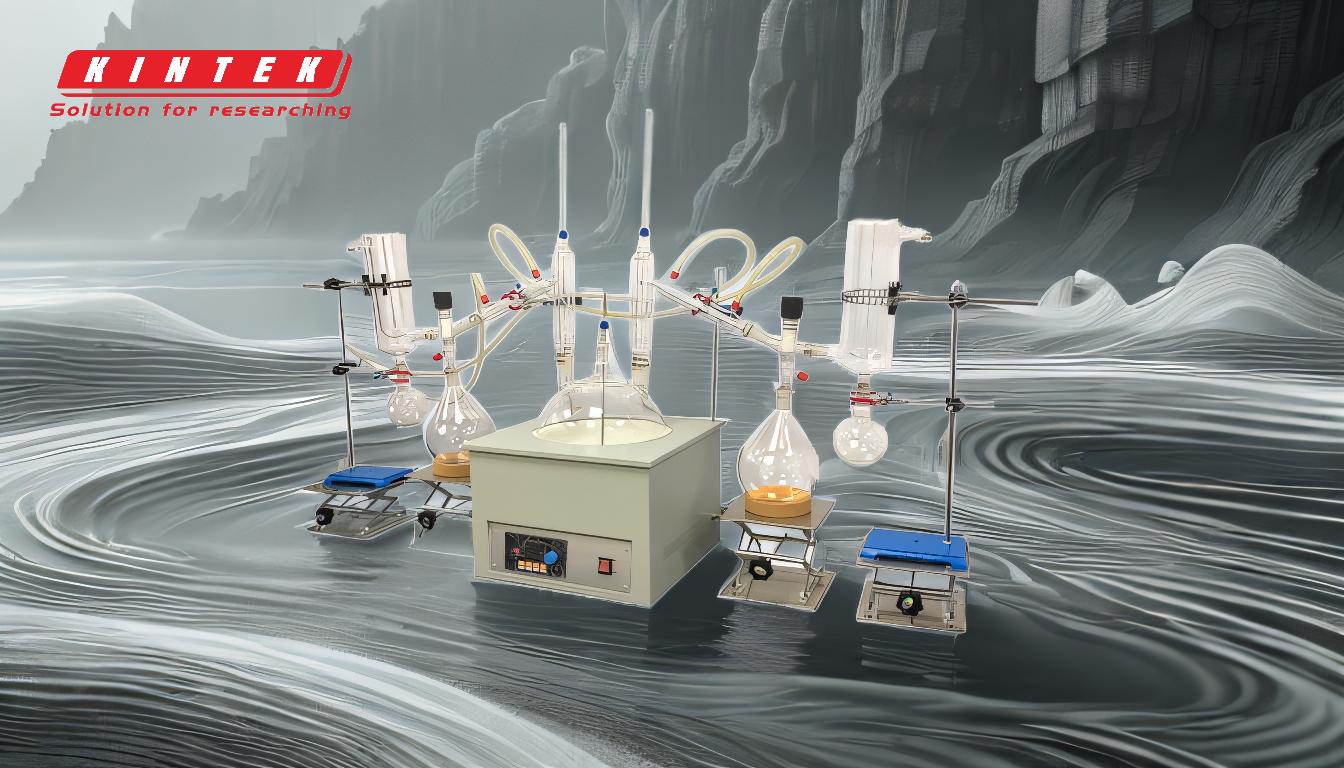Simple distillation and short-path distillation are two distinct techniques used for separating and purifying compounds, with short-path distillation offering significant improvements over simple distillation. Simple distillation is a basic method that relies on heating a mixture to its boiling point to separate components based on their volatility. In contrast, short-path distillation operates under reduced pressure and lower temperatures, making it more efficient, safer, and suitable for a wider range of materials. Key differences include temperature control, pressure conditions, material compatibility, and operational efficiency. Short-path distillation minimizes risks such as spillage and health hazards, reduces processing time, and enhances purification quality, making it a superior choice for handling sensitive or complex materials.
Key Points Explained:

-
Temperature Control and Operational Flexibility:
- Simple Distillation: Requires strict control of the boiling point of the material being distilled. This limits its flexibility, as it can only handle materials that can withstand high temperatures without degradation.
- Short-Path Distillation: Can operate at multiple temperatures, allowing for better control over the distillation process. This flexibility makes it suitable for temperature-sensitive materials that would degrade or decompose under the high temperatures required for simple distillation.
-
Pressure Conditions and Safety:
- Simple Distillation: Operates at atmospheric pressure, often leading to bubbling and boiling. This can cause spillage, loss of material, and pose health risks to workers due to exposure to volatile compounds.
- Short-Path Distillation: Operates under reduced pressure, which lowers the boiling points of the compounds being distilled. This minimizes bubbling and boiling, reducing the risk of spillage and making the process safer for operators.
-
Material Compatibility:
- Simple Distillation: Limited to specific materials that can withstand high temperatures and are not prone to decomposition. This restricts its application to a narrower range of compounds.
- Short-Path Distillation: Suitable for a wider range of materials, including those that are heat-sensitive or have high boiling points. This versatility makes it a preferred method for purifying complex mixtures or sensitive compounds.
-
Efficiency and Cost-Effectiveness:
- Simple Distillation: Requires more time and heat to achieve separation, leading to higher energy costs and longer processing times. Additionally, the risk of material loss due to spillage or degradation can increase overall costs.
- Short-Path Distillation: Requires less time and heat, reducing energy consumption and operational costs. The process is also more efficient in terms of material recovery, as the reduced pressure and shorter travel distance for vapors minimize compound loss.
-
Structural Components and Scale:
- Simple Distillation: Typically involves a basic setup with a distillation flask, condenser, and receiving flask. It is suitable for small-scale operations but may not be efficient for large-scale production.
- Short-Path Distillation: Features a more complex setup, including a short path between the evaporation and condensation surfaces. This design minimizes the distance vapors must travel, reducing the risk of compound loss. While short-path distillation is limited in scale, it produces high-quality distillate and can be adapted for larger-scale operations using techniques like wiped film distillation.
-
Application Areas:
- Simple Distillation: Best suited for separating liquids with significantly different boiling points or for purifying solvents. It is commonly used in laboratories for straightforward separations.
- Short-Path Distillation: Ideal for purifying small amounts of compounds, especially those that are unstable at high temperatures. It is widely used in industries such as pharmaceuticals, essential oils, and cannabis extraction, where high purity and preservation of sensitive compounds are critical.
In summary, short-path distillation offers several advantages over simple distillation, including better temperature control, safer operation under reduced pressure, broader material compatibility, increased efficiency, and higher-quality distillate. These benefits make short-path distillation a more advanced and versatile technique, particularly for handling sensitive or complex materials in both laboratory and industrial settings.
Summary Table:
| Aspect | Simple Distillation | Short-Path Distillation |
|---|---|---|
| Temperature Control | Limited to high boiling points; less flexible for sensitive materials. | Operates at lower temperatures; ideal for heat-sensitive compounds. |
| Pressure Conditions | Operates at atmospheric pressure; higher risk of spillage and health hazards. | Operates under reduced pressure; safer and minimizes spillage. |
| Material Compatibility | Limited to materials that withstand high temperatures. | Suitable for a wide range of materials, including heat-sensitive and high-boiling compounds. |
| Efficiency | Requires more time and heat; higher energy costs and material loss. | Faster, energy-efficient, and minimizes compound loss. |
| Structural Components | Basic setup (flask, condenser, receiver); suitable for small-scale operations. | Advanced setup with shorter vapor path; high-quality distillate and scalable for larger operations. |
| Applications | Best for liquids with distinct boiling points or solvent purification. | Ideal for pharmaceuticals, essential oils, and cannabis extraction; preserves sensitive compounds. |
Upgrade your purification process with short-path distillation—contact our experts today to learn more!










